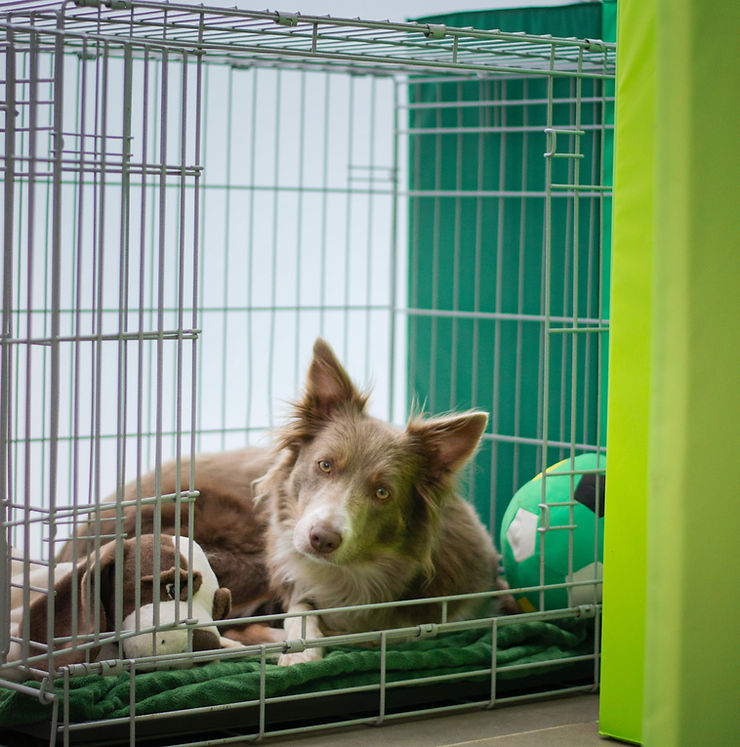

by Amanda Crosland
One of the most common concerns new puppy parents face is crate training. Especially when their dog whines, barks, or cries the moment they’re out of sight. If you’ve ever tiptoed away from your pup only to hear them cry in protest, frustration, or maybe in your opinion fear, you’re not alone. And no, your dog isn’t being dramatic. They’re just trying to figure out how the world works without you in view.

Let’s talk about what’s happening, why it’s normal, and how to help your dog learn to be okay, even when they can’t see you.
Dogs are social animals. Puppies, especially, are wired to stay close to their “pack,” which for domesticated dogs means you. If your dog is crying in the crate when you’re not visible, it’s often a combination of:
Before we jump into how to help, here are a few common mistakes to avoid:
Here are a few ways to build confidence for your pup in the crate:
Gradually build up their ability to be calm in the crate without seeing you. Start by stepping a few feet away—still visible. Then disappear briefly behind a corner. Reward calm behavior with praise or a treat when they’re quiet, not when they’re crying. As you build that distance, remember to drop a treat as you walk away, and stay very nonchalant and unexcited when you return.
Use the crate for more than just absences or bedtime. Feed meals in the crate with the door open. Toss in toys, with the door open. Let them chew a frozen peanut butter Kong in there, door open. We want the crate to feel like their bedroom, not a punishment.
Some dogs are calmer when they can’t see constant movement around them. Try a light cover or placing the crate against a wall.
Start with just 30 seconds. Step out of view. Come back in calmly and quietly. Over time, increase the duration before your dog gets upset. This teaches them: “Mom/Dad always comes back, and nothing bad happens when I’m alone.”
If you know your dog is safe, has gone potty, and is not in distress—wait for a pause in crying before you return or open the crate. This rewards calm behavior, not the noise.
If your dog shows signs of true separation anxiety—like constant howling, trying to break out, drooling, or refusing to eat—it may be time to consult a certified trainer or veterinary behaviorist. Some dogs need a more individualized plan to build separation confidence.
If your dog cries in the crate when they can’t see you, it doesn’t mean you’ve failed. It means your dog loves you and is learning how to feel safe on their own. With patience, consistency, and positive associations, your pup will learn that alone doesn’t mean abandoned, and the crate isn’t scary.
Hang in there. You’re doing a great job. And your dog will learn to believe that, too